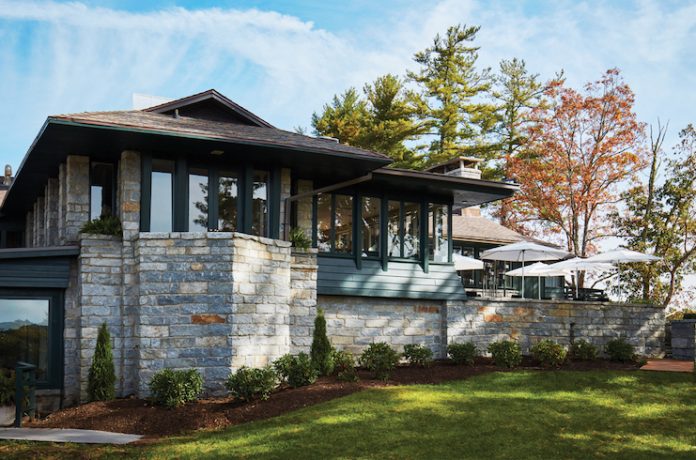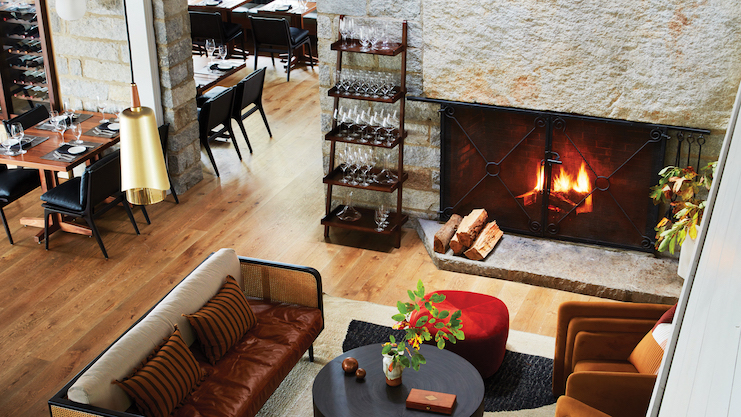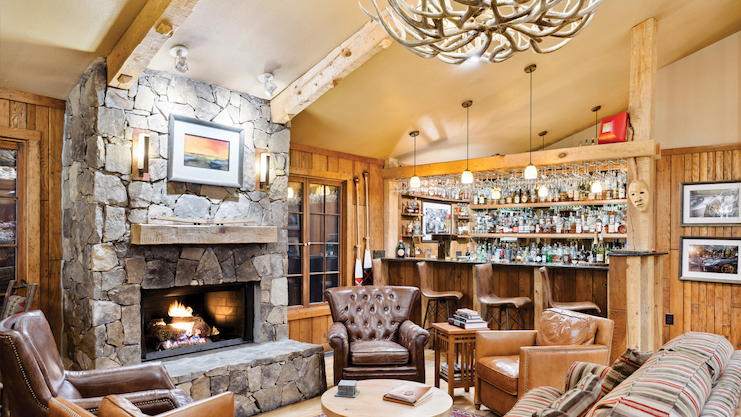
Renovations are crucial projects, whether they transform a property or simply maintain its look, feel, and MEP (mechanical, electrical, plumbing) components. They have also become more challenging projects post-COVID-19, given rising inflation and supply chain disruptions. However, astuteness in sourcing contractors and an early start on sourcing materials can help address these challenges. Two veterans of hotel renovations—Larry Spelts, president, lodging & lifestyle adventures, Indigo Road Hospitality Group, and Gregory W. Winey, founder & principal, NorthPointe Hospitality Management, LLC—discuss best practices in these areas, as well as the importance of being transparent about the project for potential guests.
Hiring a contractor
Hiring contractors with specific experience in the hotel industry is “absolutely critical,” according to Winey, even if those contractors cost more. “Those that know the hotel business know that we’re a guest-centric environment, and they are more conscious of ensuring that they keep a clean worksite and don’t disrupt the guest experience,” he observes. In addition, ongoing supply chain challenges in the hotel space call for specialized contractors “who have resources and understand our business, who can pivot and be extremely creative,” he adds. And to confirm that a contractor is sensitive to hotel operations, resourceful, and timely in completing projects, references from other hoteliers are key.
With costs for building materials still high and supply chain issues persisting, two approaches are advisable when sourcing a contractor with a hotel industry background. First, when possible, a hotelier should rely on longstanding relationships. Winey notes that in the current environment his team has actually been bidding out renovation projects less often because of an increased reliance on familiar contractors. “You want to be able to rely on folks that have been dependable, [as opposed to] taking a risk on individuals you’ve not worked with before,” he advises. “There are some great vendors and general contractors out there; it’s just that especially now, you tend to go with who you know.” Second, escalating costs make competitive bidding particularly important in cases where a longtime partner isn’t available for the project. Spelts notes that the media focus on rising costs may encourage some contractors to inflate their prices: “They think that consumers are willing to accept these higher prices because they’re hearing the same things in the media. So, if they can do a job for $100,000, they may quote $140,000 just to see if they can get it.” A competitive bidding process helps to ensure that an opportunistic contractor isn’t taking advantage of the hotelier.
Project timelines
Managing the risk of supply chain delays requires building more time into renovations, 10 percent to 20 percent, Winey recommends. In addition, ordering materials and placing deposits well in advance can be essential. “In some cases, we are pulling the trigger on ordering certain components of the renovation, whether it’s material or finished products, earlier in the planning process than we normally would,” says Spelts. “In the past, we would not order furniture, carpet, light fixtures, etc. until after we started the renovation construction. Now, that’s changed. The FF&E going into the project are ordered even before the [groundbreaking]. And the effect is that we’ll have everything we need when it’s time to install it. But the other effect is that we’re going to have a higher line item in the project: cost for storage.”
Avoiding hard-to-procure items in the design plan also helps to prevent supply chain problems. “Make sure your designer and procurement company are in the same room when you’re coming up with all your grandiose plans, because what if the designer designs something that you can’t find at a reasonable price? It shouldn’t have been designed that way,” Winey advises.
Onsite collaboration
In addition to collaboration at the design phase, all key parties should interface via regular status meetings once the project is underway to maximize its chances of timely, successful completion. These stakeholders can include the owner, property management, project manager, director of facilities or superintendent, contractor, subcontractors, etc. The first onsite meeting determines the exact scope of the work, and toward that end, input from the guest-facing operations team can be quite helpful due to their particular experiences with the facility. “They may be experiencing difficulties with the service elevator, for example,” says Spelts. “And they’re also hearing from the guests. As the team members come into contact with all of the same systems and FF&E that the guests are coming into contact with, they know what really needs to be replaced, repaired, or refurbished.”
Avoiding disruptions
For hotels that remain open during renovations, ensuring that guests are not inconvenienced by the project is an important goal. “If you can keep a hotel open with the least amount of guest disruption, that’s preferred, because it is very difficult to close a hotel down and then get your legs back when you open,” Winey notes.
If the hotel remains in operation during the project, oftentimes certain areas are put offline. These partial closures can change as the work progresses, with different rooms going on/offline. In those complex cases, it can be especially helpful to designate a project manager as a liaison between the contractor and hotel operations team.
Spelts played that role for a renovation at The Carlyle, A Rosewood Hotel, in New York City. “The sensitivity of the guests at The Carlyle, which is such a renowned luxury hotel, was so great that Rosewood felt it was valuable to not just rely on the general manager to balance the renovation work that needed to take place.” The project encompassed the exterior of the building as well as some interior units with occupancy. “They needed somebody who could speak both languages, hotel and construction. And I happened to be that person, because I had so much prior hotel construction experience and I had been the general manager of a hotel for many years,” he relates. “And my principal role was managing the location of work as it progressed around the building, so that the hotel understood which rooms and suites needed to be left vacant [such that] guests would never be exposed to the work.”
For bookings that are accepted during renovations, transparency is key. Potential guests should be made aware of the work prior to booking if there is any likelihood of a disruption. “And that’s going to dissuade some people from booking with you. But it’s the right thing to do,” Winey argues.
“Displaced business as a result of a renovation needs to be part of the renovation budget,” Spelts adds. “We, as responsible hotel operators and owners, cannot plan a renovation and ignore the cost of lost occupancy due to the renovation, because then it puts undue pressure on the hotel operations and revenue teams to drive the budgeted amount of room revenue in spite of the renovation.”
Accepting bookings that run the risk of a poor guest experience due to the project may well lead to poor reviews. Ultimately, “many bad reviews being posted online can alter the hotel’s rankings,” Spelts points out. He gives an example: “Say the hotel starts out the renovation with a five-star ranking. And in spite of the renovation, the hotelier just keeps pushing guests into the rooms without telling them there is a renovation, and they get upset and post negative reviews. All of a sudden, at the end of the renovation, you’ve got a newly renovated hotel, but now you’ve got a three-star ranking instead of a five-star ranking.
“So, you’re better off budgeting for displaced occupancy during the project rather than risking having depressed revenues after the project,” he concludes.
Renovating Historical Hotels: Added care must be taken for these rewarding projects
The renovation of a historical hotel, which is oftentimes part of a conversion, can be a delicate matter. Preserving and enhancing historical architectural elements can be accomplished by a skilled contractor, but the insides of the building—mechanical, electrical, and plumbing—is where the real trouble spots can lie. “You have to make sure you’ve gotten a very comprehensive and forensic look at the entire infrastructure of that property. If you don’t want to open those walls up, you’ll regret it later,” advises Gregory W. Winey, founder & principal, NorthPointe Hospitality Management, LLC, whose company has overseen renovations ranging from the conversion of a 113-year-old property to a Hilton Curio, to the conversion of a 1950s Jekyll Island hotel to a Hilton Tapestry. The roofing also needs a close inspection if it hasn’t been replaced in many years, he adds. “The due diligence is critical to ensure that you’ve really captured the full scope of what it is you need to do to rehab the hotel.”
On the plus side, a hotelier can apply for tax credits for renovating a historical property, although it is an extra layer of work and adds to the project’s timeline. “You have to work through the governing bodies to ensure the continued integrity of the building. So that’s a much more arduous and restrictive process. But it can be beneficial on the tax side,” Winey explains.
















